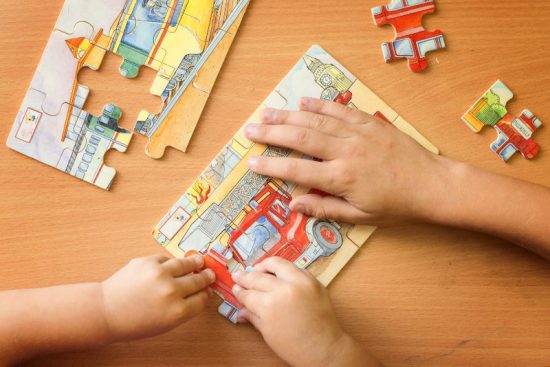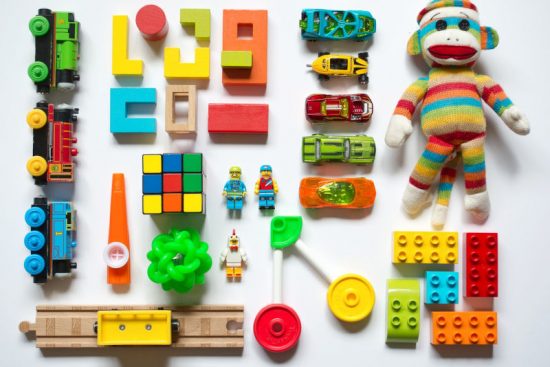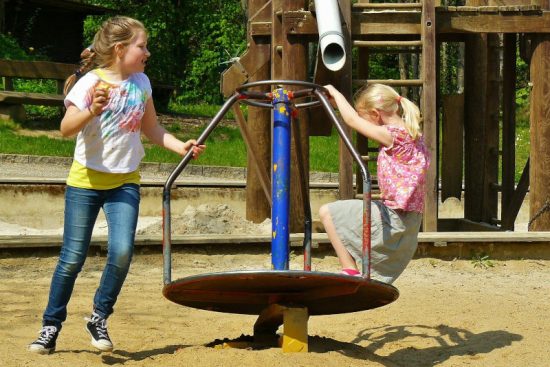
Ever wonder why some students ace a lesson while others struggle?
You could chalk it up to teaching style. You could blame the lesson plan. But it could also be the desk they’re working at. Right now.
Classroom furniture is so important to kids’ learning, focus and engagement levels, because not all students are comfortable in traditional desk settings.
Some students sit beautifully in a standard row or circle. But others wiggle, daydream or struggle to connect to the lesson.
And guess what’s behind that.
Mismatched desks and learning styles.
Let’s unpack that:
The learning styles of every child in your classroom are different.
Some need to wiggle. Some need support. Some crave collaboration. Some work best in isolation. Students learn in infinite ways. But a single type of desk, group or setup ignores learning style differences completely.
Which means…
You need school furniture that meets your students’ specific needs.
Fortunately, there is an easy fix to this. Matching the right desks and table arrangements with different learning styles can make all the difference to your students and your classroom.
In this post we’ll cover:
- Why it matters which desk you choose
- The learning style of visual learners
- School desk arrangements to support kinesthetic learners
- School tables for auditory learners
- Matching school desks to different learning styles
Why Choosing The Right School Desk Matters
Did you know…
The classroom furniture you choose isn’t just functional. It’s fundamental to learning.
Teachers know this instinctively, which is why 78% of them report that flexible learning environments lead to better student outcomes.
Here’s the thing. If students are comfortable and supported by their environment, learning happens. Period.
They focus longer. They participate more. They actually remember the content you’re teaching.
The real question is…
Would you work at a desk that made you uncomfortable all day? Neither should your students.
The right school tables for every age lay the groundwork for successful learning by supporting different physical needs at every stage of development.
For younger children, this means desks that allow movement and exploration. And for older students, it means stable, supportive tables for longer periods of concentrated work.
Visual Learners And Their Desks
How visual learners take in information is pretty obvious…
Through sight.
Visual learners understand content best when they can view diagrams, charts and written words. But what most teachers miss is that the school desk arrangement matters just as much as what’s on the whiteboard.
Visual learners need:
- Clear sightlines to the front of the class
- Desks positioned away from visual distractions
- Clean desk surfaces without clutter
- Good lighting from natural or overhead sources
A traditional classroom of front-facing desks works for visual learners because they’re automatically facing towards the teacher and board. But this isn’t just luck — positioning desks to minimize distractions and maximize sightlines is key.
Visual learners also do well with desks with built-in organization systems. Cubbies, pencil grooves and storage compartments keep their materials neat and give them less visual clutter to process.
Help visual learners even more by choosing desks with light-colored surfaces that reduce eye strain and make it easier to read.
Kinesthetic Learners Need Desk Movement
Kinesthetic learners need to move to learn.
Think about it. Would you be able to sit still at a desk for hours on end? Neither can a student who processes information through motion.
Kinesthetic learners need desks that support movement without causing disruptions, including:
- Wobble stools or chairs with flexible bases
- Standing desk alternatives
- Adjustable height tables
- Desks with fidget-friendly features
Student focus and engagement is drastically higher when they can move while they’re learning. Kinesthetic learners aren’t being disruptive when they fidget — they’re processing information through motion.
Here’s what their desks should include:
- Rounded desk edges for safety
- Lightweight desk materials for easy repositioning
- Stable bases that don’t tip
- Ample space underneath for foot movement
Teachers’ biggest mistake with kinesthetic learners is confusing all movement with distraction. In the case of a kinesthetic student, controlled movement actually increases focus and retention.
Give them the right desk setup and their learning outcomes will transform.
Auditory Learners Require Flexible Desk Grouping
Auditory learners are the exact opposite of visual learners…
They take in information by hearing it.
Auditory learners learn best by listening to and speaking out loud. They excel in group discussions, verbal instructions and talking through problem-solving.
Auditory learners need school desks that allow easy conversation, including:
- Desks that are closer to the teacher
- Flexible desk arrangements for group work
- Sound-friendly surfaces that don’t amplify noise
Cluster seating or pod-style desks are great for auditory learners because they make conversation-based learning easy and natural.
A few auditory learners could use their own personal table, but for the most part, auditory learners want to be near their peers.
Pods or cluster seating also makes group work easier, which is a natural fit for auditory learning.
Help auditory learners focus by ensuring they still have a space to work in independently, without disruption.
Look for:
- Modular desks that easily rearrange
- Tables that hold small groups
- Sound-friendly desks that don’t echo
- Spaces that can accommodate both listening and speaking
The name of the game with auditory learners is flexibility. Auditory learners who can be collaborative during group activities but have their own desk space during independent work are golden.
Reading/Writing Learners And Their School Tables
The last, and most traditional type of learner, is the reading/writing learner…
These students process information through words.
You know them. They’re the ones taking notes, reading everything, and spreading out their materials at their desks. And for the most part, traditional desks work well for them. But not always.
Reading/Writing learners actually need:
- A good amount of surface space for books and papers
- The right desk height for ergonomic writing
- Good posture support to prevent fatigue
- Book storage and storage spaces
These students benefit from having:
- Desks with large work surfaces (at least 24″ deep)
- A slight desk tilt
- Built-in book storage or shelves
- Smooth surfaces that don’t snag paper
FYI: 73% of student progress in mathematics were linked to classroom design factors like flexibility and student ownership. When students feel comfortable in their space, their academic performance improves.
Reading/writing learners spend longer periods at their desks. They need ergonomic support more than other learning types, because poor posture quickly results in fatigue and lack of focus.
Setting Up A Classroom With Multiple Learning Styles
Here’s the reality of modern learning environments…
No classroom is full of one type of learner. You’ll have visual, kinesthetic, auditory, and reading/writing learners all jumbled up. And to top it off, you could even have multiple learning preferences in the same student.
The fix? Designate different zones that offer a variety of desk options.
Arrange your classroom with:
- Traditional desks for visual and reading/writing learners
- Standing or adjustable desks for kinesthetic learners
- Collaborative table pods for auditory learners
- Flexible seating arrangements that students can choose from
Here’s the genius of this design. It accepts a simple truth: every kid is different, and no single desk style will work for everyone.
Take it slow at first. Add some wobble stools. Introduce one standing desk. Set up a collaborative pod. See how your students react and adjust your classroom environment as you learn what works for them.
The effort and investment is worth it. When students are engaged, focused and successful in your classroom, it’s because you created a physical environment that supports how they actually learn.
In Summary
The best school and classroom desks aren’t the most expensive. They’re the ones that match how your kids learn with the right desk and classroom arrangement.
Visual learners need sightlines. Kinesthetic learners need movement. Auditory learners need to be grouped flexibly for collaboration. Reading/writing learners need functional desk surfaces.
When you get this right, here’s what you’ll get:
- More engaged students
- Fewer behavioural issues
- Improved academic performance
- Happier, more focused learners
It’s time to ditch the old model of identical desks in rigid rows. Modern classrooms need flexible and considered furniture choices that support the way every child learns.
Find out the learning styles of your students. Then match those styles to the right desks. Try different arrangements and get student feedback. Iterate.
The right desk setup isn’t the only answer to effective learning in the classroom. But it is the foundation.




